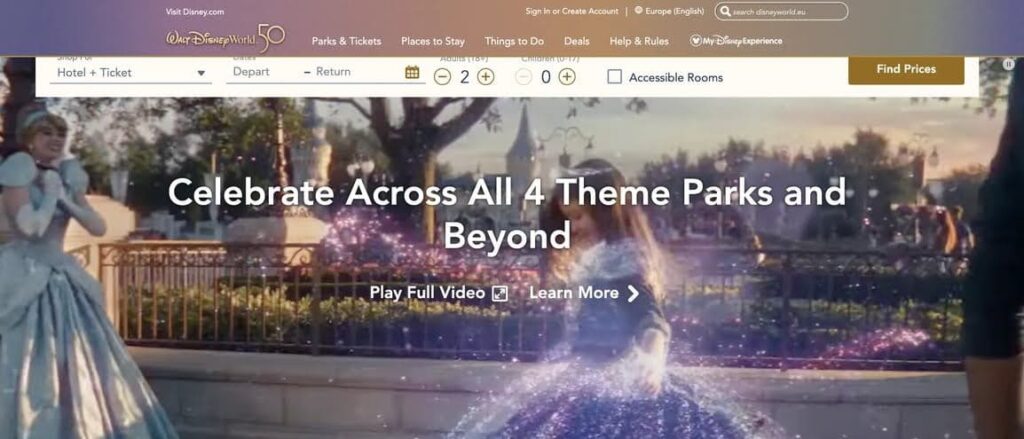Cross-Channel Marketing
Currently, every touchpoint matters. This belongs to the business to create a subtle, effortless, and rewarding customer experience. It’s exactly what cross-channel marketing is all about: leveraging multiple mediums to connect with, take part in, and seamlessly convert prospects.

In this article, we’ll go over all you need to find out about cross-channel marketing, providing expert advice on how to adopt it in today’s market.
What is Cross-Channel Marketing?
It’s a method in which entrepreneurs integrate their sales and marketing channels to provide a tailored experience and cohesive messages, which has been shown to enhance customer retention and sales.
Cross-channel marketing is a viable way to carry out target campaigns since it allows consistency in reaching users across multiple channels. Typically, prospects encounter your brand’s message via a single channel; thus, being prominent across various avenues is vital.
The Components of a Cross-Channel Marketing Strategy
The primary goal of an integrated strategy is to engage with people where they already are. As the market grows, you should always be alert for new communication methods. Then, develop a cross-channel campaign covering multiple pathways, each of which must adhere to the layout of a certain channel and client needs.
When initiating a campaign, remember that you’ll likely change the strategy and make continuing improvements as you gain data. The more data you accumulate, the more you‘ll know about a client’s decision-making, providing insights into your cross-channel marketing optimization.
Defining Your Campaign Goals
Set up certain objectives to ensure you’ll create an effective cross-channel marketing strategy that aligns with the corporate intent. Your goals provide a clear roadmap for the intended efforts, allowing you to track marketing campaigns and make data-driven decisions.
Clearly outline the core milestones and avoid imprecise or ambiguous aims. They must always be given importance since they’ll serve as the framework for your cross-channel marketing. The success of your business must grasp where you intend to take it in the future. And the way to get there is to have a roadmap to guide you.
Identifying Your Target Audience
Data accuracy is critical. The initial stage in developing a profitable cross-channel marketing strategy is to improve data quality. It’ll make you more familiar with a customer and provide an accurate picture of the customer journey.
When you have the data, segment the target audience into psychographic, geographical, and behavioral categories. This can help you discover the significant segment disparities, enabling you to personalize messaging and offerings.
Selecting the Right Channels for Your Campaign
Specify the many marketing channels where your clients are typically located. Use A/B testing to discover what the customer journey looks like and what elements of a cross-channel campaign they react to. After figuring out what integrated campaigns produce the best results, send them to all your existing clients across effective channels.
Creating a Cohesive Message Across Channels
Having consistent brand messaging is critical for building a cohesive business identity. The main words and values must be constant whether a customer engages with you via social media, email marketing, or in-store. This consistency promotes trust and fosters the brand image from the view of clients.
A coordinated strategy requires an integrated content calendar. Your materials are adapted to the authenticity of various mediums while being consistent with the narrative. This method ensures that your messaging is informative and resonates with your target audience.
Benefits of Cross-Channel Marketing

Multiple avenues could increase your visibility. The business, brand, services, and products are receiving more attention via multiple channels. It’s important that one channel can drive interest in another. The method relies on software to employ data across channels, which can help you deliver customization and establish loyalty more promptly.
Enhanced Customer Experience
Gathering data from particular channels can provide useful insights into your clients’ preferences. It enables you to adjust all marketing campaigns accordingly. This personalized strategy allows you to build closer ties with your customers and enhance conversion rates.
Increased Brand Awareness
A persuasive cross-channel marketing strategy can help you provide consistent awareness, boosting the likelihood of people seeing and familiarizing themselves with your brand. Presenting a consistent brand story through frequent posting on the given networks, running regular ads, and creating relevant blog entries all help to raise brand awareness sooner rather than later.
Improved Customer Engagement
Cross-channel marketing aims to provide clients with a consistent and seamless customer experience. As a result, consumer engagement necessitates a personalized approach targeted to the intended audience — both present and prospective ones.
Higher Conversion Rates
Consistency is essential throughout the purchasing process.l, when cross-channel marketing campaigns aim to steer clients through the funnel. This allows clients to smoothly transition from interest to buy, resulting in a more efficient sales funnel and improved conversion rates.
How to Get Started with Cross-Channel Marketing
To properly execute marketing campaigns, the team should create a simple campaign schedule that combines all channels flawlessly. However, not all channels are made equal, nor are all efforts. Consider allocating to channels based on their purpose.
Consider the market reach and how your efforts will contribute — this is a significant step toward sales. Determine your target channels, distribute your budget wisely, and focus on the customer journey to ensure that your cross-channel marketing strategy aligns with your existing goals.
Define Your Goals
Although each channel may achieve different goals, having a few goals will enable the business to unite its efforts; it is easy to become discouraged by the in-depth implementation specifics of marketing channels. Hence, overarching goals will help you hold yourself accountable for maintaining the efficiency of your multi-channel marketing.
It ensures that each strategy on your schedule has meaning and focus. However, if marketing objectives aren’t set and communicated to your team, cross-channel marketing efforts will fail before they have a chance to succeed.
Understand Your Target Audience
An audience influences cross-channel marketing strategy decisions. Social groups decide where you’ll spend money, how to pique their interest, and what product to develop. Knowing their details isn’t enough; you must also grasp their demands and behaviors.
You should research extensively to determine where your target clients spend most of their time online. Channels such as social networks, search engines, and industry-specific media are all possible options for engagement and targeting.
Create a Customer Journey Map
Before diving into cross-channel marketing, it’s necessary to understand the sales funnel. Grasping the behavior of your target market at each stage of the customer journey can help you determine which offers are best suited to each stage. You can review the company’s historical statistics and information on how previous customers have converted. A cross-channel strategy may also include insights into a client to position your brand in their thoughts and explain their actions to commit to the product.
Select the Right Channels
Your best option is to select channels that will function well together to enhance results. Similarly, email marketing and social media targeting are complementary. Users seeing your posts on multiple channels may prompt them to conduct additional research on your company.
When selecting an advertising channel, examine each media’s value and role in the customer experience; it’s also vital to keep the primary goal of the cross-channel marketing campaign in mind — will it contribute to the corporate objectives and goals?
Create Compelling Content
Cross-channel marketing efforts will be even more effective if you personalize the material you deliver and how you send it. Take advantage of chances to segment a client base based on data such as geography and behaviors to create personalized content and offers suited to their specific needs and stages in the journey. It’ll help you develop trust and customer loyalty.

Tips for Effective Cross-Channel Marketing
A strategy requires access to software to track channels and deliver meaningful, informative data about each channel’s performance. This data can then be combined to create a clear perspective of the marketing setup, including how each channel interacts with the others.
To avoid manually gathering this data to improve your campaign’s efficiency and maximize marketing ROI, you need to use specific tools and consider several essential points.
Consistency is Key
In fact, sustaining consistency yields dependable results and can assist in developing a stable framework for a cross-channel marketing campaign. With this strategy, you can ensure consistent brand messages and visuals across numerous channels, allowing you to build credibility with your audience and create leadership.
Personalization Matters
An excellent way to offer seamless experiences to your customers is to tailor information based on actual interests, allowing for a tailored journey across channels. It causes people to pause and pay attention to the brand message in an otherwise tempting content market.
Data-Driven Decisions
You can use real-time analytics to track campaigns after they’ve begun and identify problems before they escalate. This allows you to make data-driven judgments on overall or minor changes during a campaign to maintain its efficiency.
Mobile Optimization
This strategy aims to decrease the necessity for pinching and scrolling. The pictures are lighter, so the site loads faster, and the buttons are larger to support bigger fingertips. Text optimized for smartphones is brief and easy to read, with a simplified conversion process. In this manner, you might earn more stars by targeting people in specific mobile-focused channels.
Measure and Iterate
Use analytics and tools like Google Analytics to measure and track campaign results. Doing so will allow you to figure out what works and doesn’t, generating helpful information for future campaigns. Regular testing helps you find what resonates most with your audience, allowing you to fine-tune your efforts and boost their productivity.
Cross-Channel Marketing Campaign Examples
Initially, Starbucks designed every aspect of the customer experience to encourage retention. Starbucks Rewards, for example, is regarded as one of the best customer loyalty rewards programs; the company recently added the opportunity to check and reload cards in the app on their website and in stores. They update all channels promptly, and the process is so swift that you’ll refill your card while standing in line to order.

The card can subsequently be uploaded to a mobile phone, allowing you to pay using your device instead of the physical reward card. This way, Starbucks can interact with their customers directly through their phones.
Another example is Disney’s website, which provides an authentic experience through its responsive layout. Though the property is focused on design, it also showcases its verticals, such as Disney’s Vacation Planner, the shopDisney online store, and access to a vast entertainment library. All of these verticals work correctly on any device.

Vacation Planner makes arranging a trip to Disney’s parks and activities easy. Disney walks consumers through the entire process, including selecting various parks, deciding where to stay, and setting a travel schedule via My Disney Experience.
FAQ
What is a cross-channel sales strategy?
This multi-channel marketing entails engaging customers and driving sales across many sales channels. These channels may include ecommerce, social networks, email marketing, and physical venues. The goal is to deliver a seamless experience across all touchpoints.
What is B2B channel marketing?
Sales avenues for third-party enterprises focus on advertising services directly to other businesses; they often experience higher sales volumes and longer cross-channel marketing relationships. B2C sales channels target individual customers. These are usually smaller-quantity sales that can be more dynamic.
What is a good example of cross-selling?
It occurs when a salesman advertises to a customer a product that is complementary or comparable to the one the customer is already purchasing. For example, if a consumer purchases clothing, the brand will attempt to promote a necklace that would complement the clothing.
What is the difference between cross-channel and omnichannel marketing?
Multichannel marketing is to spread the word about products through numerous channels, such as selling commodities on a website and in a physical store. However, omnichannel marketing goes a step further by taking into account customers’ demands and reaching them wherever they are, using all accessible media.





